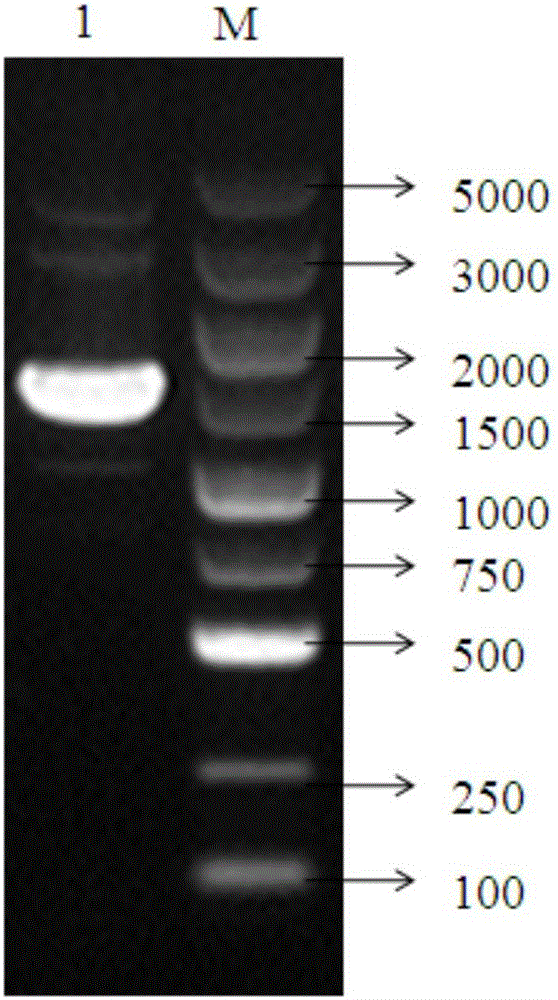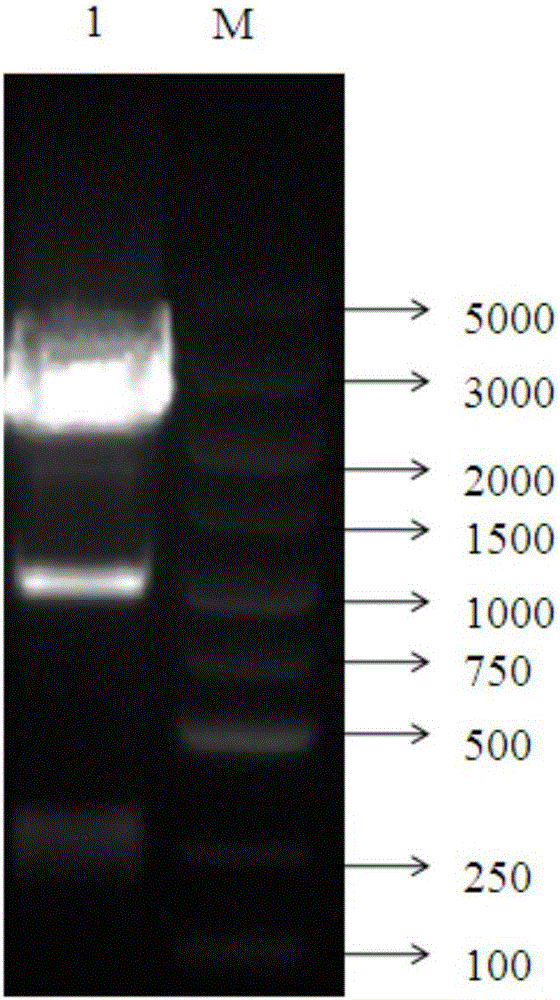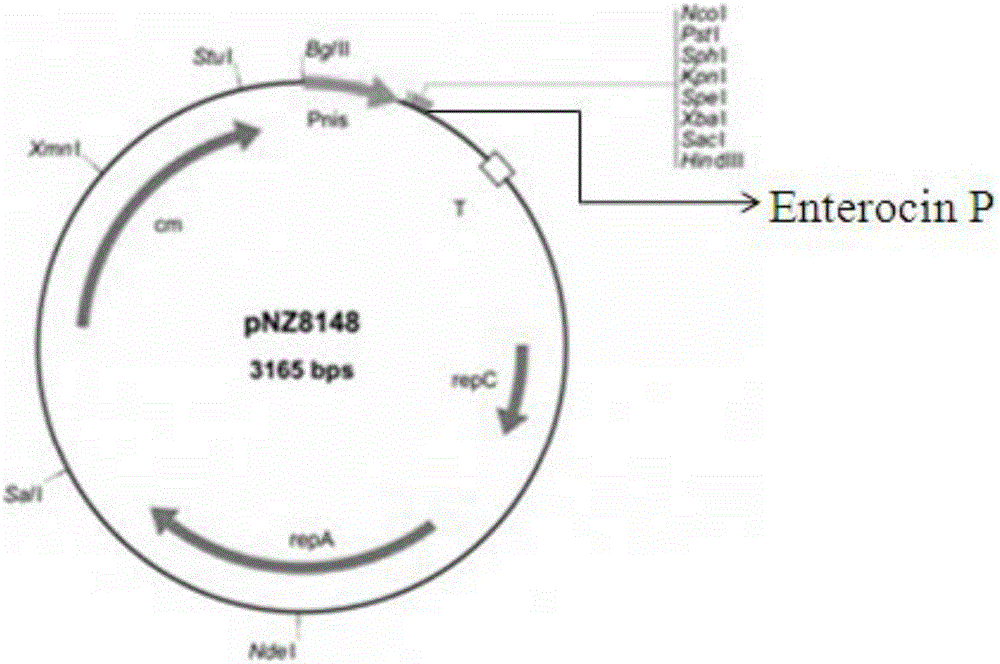Probiotic antimicrobial peptide Enterocin P, and preparation method and application thereof
An antibacterial peptide and probiotic technology, applied in the field of genetic engineering, can solve the problems that restrict the practical application of the antibacterial peptide EnterocinP, the content of the antibacterial peptide is low, and the yield of the antibacterial peptide is low, and achieves significant anti-pathogenic effect, good effect and probiotic effect, and no antibiotics. The effect of drug resistance
- Summary
- Abstract
- Description
- Claims
- Application Information
AI Technical Summary
Problems solved by technology
Method used
Image
Examples
preparation example Construction
[0047] The preparation method of the probiotic antimicrobial peptide Enterocin P of the present invention comprises the following steps:
[0048] (1) Enterocin P gene artificially synthesized with pstI and HindIII restriction sites on both sides has the nucleotide sequence shown in SEQ ID No.3. A gene whose nucleotide sequence is artificially synthesized as shown in SEQ ID NO: 3;
[0049] (2) Construct the pNZ8148-Enterocin P recombinant plasmid capable of highly expressing the antimicrobial peptide Enterocin P; connect the nucleotide sequence shown in SEQ ID No.3 with the linearized pstI and HindIII double-enzyme restriction endonucleases The pNZ8148 plasmid was connected to obtain the pNZ8148-Enterocin P connection product, and the connection product was introduced into Escherichia coli MC1061 to obtain a recombinant plasmid containing pNZ8148-Enterocin P.
[0050] (3) using the pNZ8148-Enterocin P recombinant plasmid to transform the host bacterium to construct a genetical...
Embodiment 1
[0057] Main material used in the present invention
[0058] Strains and vectors: Escherichia coli MC1061, Lactococcus lactis NZ9000 and pNZ8148 plasmid bacteria were purchased from Mo Bi Tec, Germany; DNA Marker was purchased from Shanghai Jierui Co., Ltd.; Listeria, Staphylococcus aureus and Salmonella; probiotic antibacterial peptide Enterocin The P gene was synthesized by Sangon Bioengineering (Shanghai) Co., Ltd. and transformed into Escherichia coli DH5α; the primers were synthesized by Sangon Bioengineering (Shanghai) Co., Ltd.
[0059] Main reagents and kits: M17 broth medium was purchased from Qingdao Haibo Company; restriction enzymes PstⅠ and HindⅢ.T4DNA Ligase.EX Taq were purchased from TaKaRa Biotech Company; chloramphenicol plasmid extraction and DNA gel recovery kit Purchased from Tiangen Company; nisin purchased from Sigma Company.
[0060] Preparation of main reagents:
[0061] GM17: M17 broth medium was autoclaved at 121° C. for 15 minutes, and after cooling...
Embodiment 2
[0074] Preparation of Escherichia coli MC1061 Competent Cells
[0075] 1. 1% LB liquid medium inoculated with MC1061, shake overnight at 37°C;
[0076] 2. Take 1% of the overnight culture solution and inoculate it in LB liquid medium, culture it with shaking at 37°C for 4 hours (the bacteria are in the logarithmic growth phase at this time), and place it on ice for 10 minutes;
[0077] 3. Centrifuge at 4000g for 10min at 4°C to collect the logarithmic phase cells, discard the supernatant, and collect the bacterial cell pellet;
[0078] 4. Use pre-cooled 0.1M CaCl 1 / 10 of the volume of the previous liquid medium 2 Bacteria, placed on ice for 30 minutes;
[0079] 5. Centrifuge at 4000g for 5 minutes at 4°C, discard the supernatant, and collect the bacterial cell pellet;
[0080] 6. Use 1 / 100 of the volume of the previous liquid medium containing 0.1M CaCl 2 Solution resuspended bacteria;
[0081] 7. Pipette 200 μL into centrifuge tubes and store at -80°C.
PUM
 Login to View More
Login to View More Abstract
Description
Claims
Application Information
 Login to View More
Login to View More - R&D
- Intellectual Property
- Life Sciences
- Materials
- Tech Scout
- Unparalleled Data Quality
- Higher Quality Content
- 60% Fewer Hallucinations
Browse by: Latest US Patents, China's latest patents, Technical Efficacy Thesaurus, Application Domain, Technology Topic, Popular Technical Reports.
© 2025 PatSnap. All rights reserved.Legal|Privacy policy|Modern Slavery Act Transparency Statement|Sitemap|About US| Contact US: help@patsnap.com



